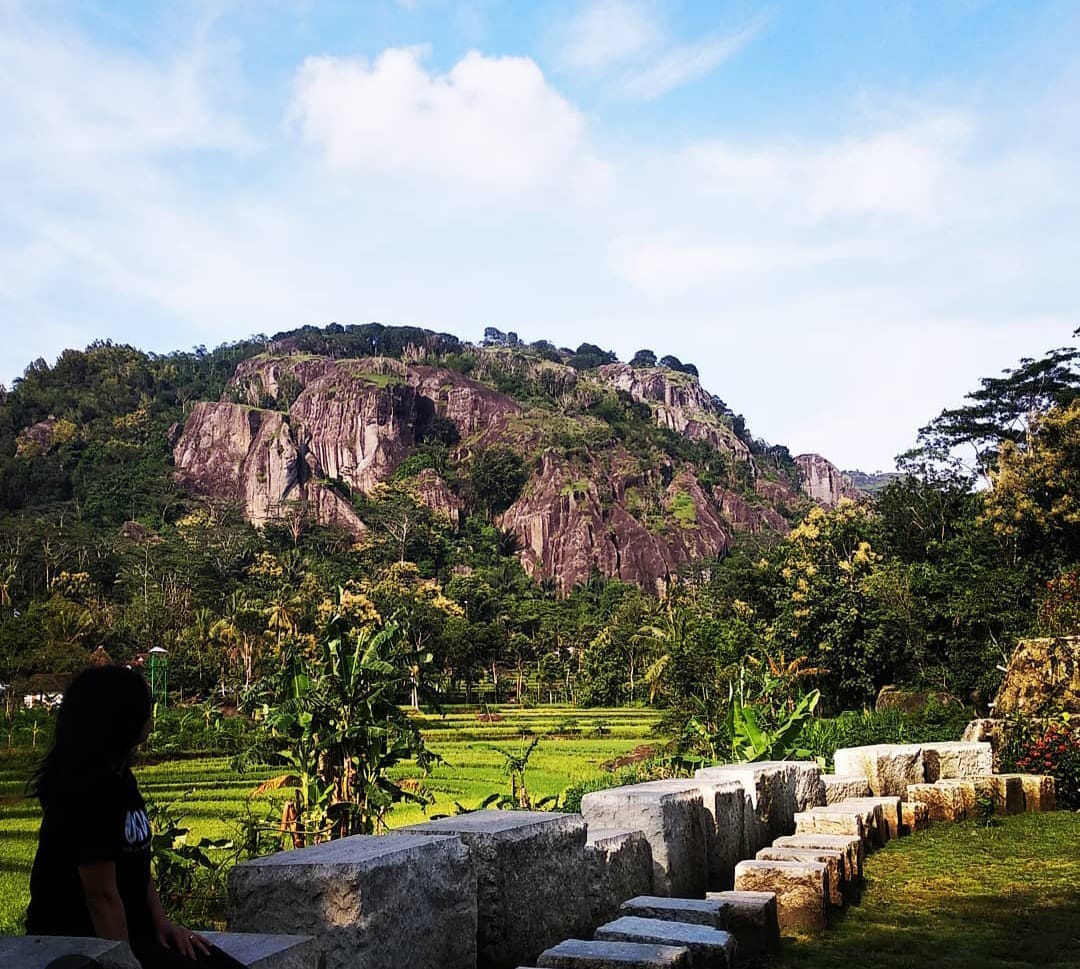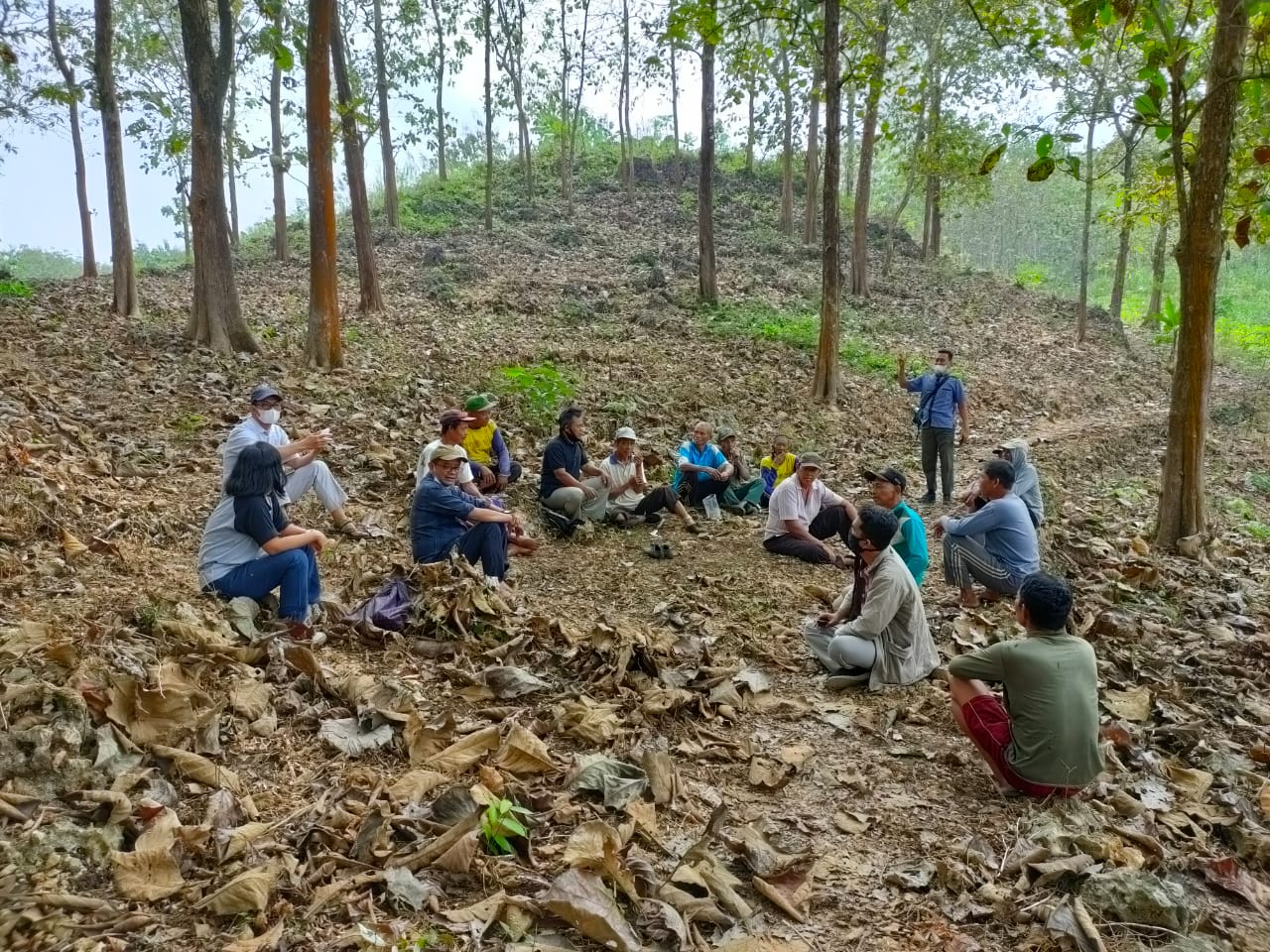The Failure Factors of Collective Action in Promoting the Recognition of Customary Forest: Case of Kenegerian Rumbio Customary Forest in Riau Province
Abstract
One of the five schemes in social forestry program in Indonesia is customary forest recognition. Kenegerian Rumbio Customary Forest, a customary forest in Riau Province, is failed in the recognition process. The objectives of this study are to analyze the failure factors of collective action and to formulate strategies to encourage the success of collective action on recognition of Kenegerian Rumbio Customary Forest. This research was built by using both quantitative and qualitative approach where the data were collected by using survey and in-depth interviews. The research results found that improper facilitation caused by communication issues between involved parties, the absence of the symbolic power, the failure in forming the common knowledge are the factors leading to the failure of collective action. To reconstruct the collective action, this study offered four strategies: (1) to frequently communicate with personal approach to the two highest indigenous leaders with whom facilitators have difficulty communicating well, (2) to mediate the two conflicted indigenous leaders for generating their motivation to propose their forest, (3) to conduct socialization to all indigenous leaders (40 jini) and community representatives to increase an understanding regarding the purpose and importance of recognition of customary forest, and (4) to conduct a participatory mapping to reduce area border issues among two sub-tribes.
References
Alviya, I., Muttaqin, M. Z., Salminah, M., & Hamdani, F. A. U. (2018). Community-based carbon emission reduction program in protection forest. Jurnal Analisis Kebijakan Kehutanan, 15(1), 19–37. https://doi.org/10.20886/jakk.2018.15.1.19-37
Arfitriyana, Sribudiani, E., & Mukhamadun. (2015). Valuasi ekonomi air di hutan larangan adat Kenegerian Rumbio Desa Pulau Sarak Kecamatan Kampar Kabupaten Kampar. Jurnal Online Mahasiswa Fakultas Pertanian Universitas Riau, 2(1).
Asmin, F. (2018). Konstruksi modal sosial bagi pengelolaan hutan berbasis masyarakat: Sebuah kerangka konseptual. Jurnal Ilmu Sosial dan Humaniora, 7, 32–45. https://doi:10.23887/jish-undiksha.v7i1.13301
Bappeda Kampar & P4W-IPB. (2015). Pemetaan batas hutan larangan adat Kenegerian Rumbio Kabupaten Kampar. Bogor: Bappeda Kampar & P4W-IPB.
Balliet, D. (2010). Communication and cooperation in social dilemmas: A meta-analytic review. The Journal of Conflict Resolution, 54(1), 39–57. https://doi.org/10.1177/0022002709352443
Beard, V., & Dasgupta, A. (2006). Collective action and community-driven development in rural and urban Indonesia. Urban Studies, 43, 1451–1468. https://doi.org/10.1080/00420980600749944
Behrens, F., & Kret, M. E. (2019). The interplay between face-to-face contact and feedback on cooperation during real-life interactions. Journal of Nonverbal Behavior, 43(4), 513–528. https://doi.org/10.1007/s10919-019-00314-1
Bourdieu P. (1989). Social space and symbolic power. Sociological Theory, 7(1), 14–25. https://doi.org/10.2307/202060
[BRWA] Badan Registrasi Wilayah Adat. (2020, June). Wilayah adat Kenegerian Umbio. Retrieved from http://brwa.or.id/wa/view/c1NmNHB4eEIwcVk
Charness, G., Du, N., & Yang, C-L. (2011). Trust and trustworthiness reputations in an investment game. Games and Economic Behavior, 72(2), 361–375. https://doi.org/10.1016/j.geb.2010.09.002
Hasbullah, J. (2006). Social capital (Menuju keunggulan budaya manusia Indonesia). Jakarta: MR-United Press.
Hasibuan, S., Suhesti, E., & Insusanty, E. (2016). Kajian ekologi pasak bumi (Eurycoma longifolia Jack.) dan pemanfaatan oleh masyarakat di sekitar hutan larangan adat rumbio, Kabupaten Kampar Provinsi Riau. Wahana Forestra: Jurnal Kehutanan, 11, 34–48. https://doi.org/10.31849/forestra.v11i2.152
Hasugian, R. M., Yoza, D., & Sulaeman, R. (2017). Sebaran pohon penghasil buah-buahan di hutan larangan adat Kenegerian Rumbio Kecamatan Kampar Kabupaten Kampar Provinsi Riau. Jurnal Online Mahasiswa Fakultas Pertanian Universitas Riau, 4(2).
Hidayat, T., Sadjati, E., & Insusanty, E. (2015). Potensi dan pemanfaatan mata air sikumbang desa pulau sarak pada kawasan hutan larangan adat rumbio Kampar-Riau. Wahana Forestra: Jurnal Kehutanan, 10(1). https://doi.org/10.31849/forestra.v10i1.619
Insusanty, E., & Ratnaningsih, A. T. (2015). Nilai manfaat ekonomi air hutan larangan adat rumbio. Wahana Forestra: Jurnal Kehutanan, 10(2). https://doi.org/10.31849/forestra.v10i2.228
Ishihara, H., & Pascual, U. (2009). Social capital in community level environmental governance: A critique. Ecological Economics, 68(5), 1549–1562. https://doi.org/10.1016/j.ecolecon.2008.11.003
Jumrana., & Tawulo, M.A. (2015). Fasilitator dalam komunikasi pemberdayaan masyarakat. Jurnal Profetik, 8(1), 19–30.
Kerr, N. L., & Kaufman-Gilliland, C. M. (1994). Communication, commitment, and cooperation in social dilemma. Journal of Personality and Social Psychology, 66(3), 513529. https://doi.org/10.1037/0022-3514.66.3.513
Linde, S. (2018). Communication and cooperation: A study of the relationship between political communication and large-scale collective action [dissertation]. Luleå: Luleå University of Technology. Retrieved from: http://diva2:1183224
Nugroho, Y. P., Pambudi, A., Harini, A., Noveri, N. P., Nurhaeni, R., Saputro, A., ..., & Firdaus, A. (2018). Hutan adat wujud rakyat berdaulat bangsa bermartabat (Y. P. Nugroho, Ed.). Jakarta: Kementerian Lingkungan Hidup dan Kehutanan.
Nurrochmat, D. R., Hasan, F. M., Suharjito, D., Budiaman, A., Hadianto, A., Ekayati, M., …, & Ryandi, E. D. (2012). Ekonomi politik kehutanan: Mengurai mitos dan fakta pengelolaan hutan (D. R. Nurrochmat, & M. F. Hasan, Eds.). Jakarta: INDEF.
Ostrom, E. (1990). Governing the commons: The evolution of institutions for collective action. New York: Cambridge University Press. https://doi.org/10.1017/CBO9780511807763
Ostrom, E. (2004). Understanding collective action. In R. S. Meinzen-Dick, M. Di Gregorio (Eds.), Collective action and property rights for sustainable development 2020 vision focus 11. Washington DC: International Food Policy Research Institute (IFPRI).
Ostrom, E. (2010). Analyzing collective action. Agricultural Economics, 41, 15–166. https://doi.org/10.1111/j.1574-0862.2010.00497.x
Ostrom, E., & Ahn, T. K. (2009). The meaning of social capital and its link to collective action (G. T. Svendsen & G. L. H. Svendsen, Eds.). Northampton: Edward Elgar Publisher.
Putnam, R. (1993). Making democracy work: Civic traditions in modern Italy. New Jersey: Princeton University Press. https://doi.org/10.2307/j.ctt7s8r7
Reed, S., Graves, A., Dandy, N., Posthumus, H., Huback, K., Morris, J., & Stringer, L. (2009). Who's in and why? A typology of stakeholder analysis methods for natural resources management. Journal of Environmental Management, 90, 1933–1949. https://doi.org/10.1016/j.jenvman.2009.01.001
Rijal, M., & Noer, S. (2013). Peran modal sosial dalam pelestarian hutan. Jurnal Kebijakan dan Administrasi Publik, 17(2), 20–36. https://doi.org/10.22146/jkap.6852
Rokhani, Sumarti, T., Damanhuri, D. S., & Wahyuni, E. S. (2016). Dilema kolektivitas petani kopi: Tinjauan sosiologi weberian (Kasus petani kopi di Nagori Sait Buttu Saribu, Kecamatan Pamatang Sidamanik Kabupaten Simalungun, Sumatera Utara). Sodality: Jurnal Sosial Pedesaan, 4(1), 1–10. https://doi.org/10.22500/sodality.v4i1.14400
Saputro, A. W. D. (2012). Modal sosial dan persepsi masyarakat dalam pembangunan hutan tanaman rakyat di Kabupaten Ogan Komering Ilir [thesis]. Bogor: IPB University.
Sribudiani, E., Somadona, S., Sulaeman, R., Syafrinal, S., Yusuf, S., Amin, Y., …, & Djarwanto, D. (2019). Sifat fisis kayu berkualitas rendah dari Riau setelah melalui proses pengawetan pohon dengan teknik bandage dan infus. Wahana Forestra: Jurnal Kehutanan, 14(2), 30–37. https://doi.org/10.31849/forestra.v14i2.3515
Suharjito, D. (2013). Reforma agraria di sektor kehutanan: Mewujudkan pengelolaan hutan lestari, keadilan sosial dan kemakmuran bangsa. In H. Kartodihardjo (Ed.), Kembali ke jalan lurus: Kritik penggunan ilmu dan praktek pengelolaan kehutanan indonesia (pp. 423–449). Yogyakarta: FORCI Development dan Tanah Air Beta.
Suharti, S., Darusman, D., Nugroho, B., & Sundawati, L. (2016). Strengthening social capital for propelling collective action in mangrove management. Wetlands Ecology and Management, 24(6), 683–695. http://doi.org/10.1007/s11273-016-9496-9
Umar, H. (2005). Metode penelitian untuk skripsi dan tesis bisnis. Jakarta: PT Raja Grafindo Persada.
Yatimah, D. (2015). Strategi fasilitasi perubahan sosial. Jakarta : FIP UNJ.
Zeffane, R., Tipu, S. A., & Ryan, J. (2011). Communication, commitment & trust: Exploring the triad. International Journal of Business and Management, 6(6), 77–87. http://doi.org/10.5539/ijbm.v6n6p77
Zulfahmi, Nelawati, & Rosmaina. (2015). Kepadatan dan pola penyebaran pasak bumi (Eurycoma longifolia Jack.) di zona Alaman Kuyang, hutan larangan adat Kenegarian Rumbio. Jurnal Agroteknologi, 6(1), 41–46. http://doi.org/10.24014/ja.v6i1.1375
Authors

This work is licensed under a Creative Commons Attribution 4.0 International License.
Jurnal Manajemen Hutan Tropika is an open access journal which means that all contents is freely available without charge to the user or his/her institution. Users are allowed to read, download, copy, distribute, print, search, or link to the full texts of the articles in this journal without asking prior permission from the publisher or the author. This is in accordance with the Budapest Open Access Initiative (BOAI) definition of open access.






